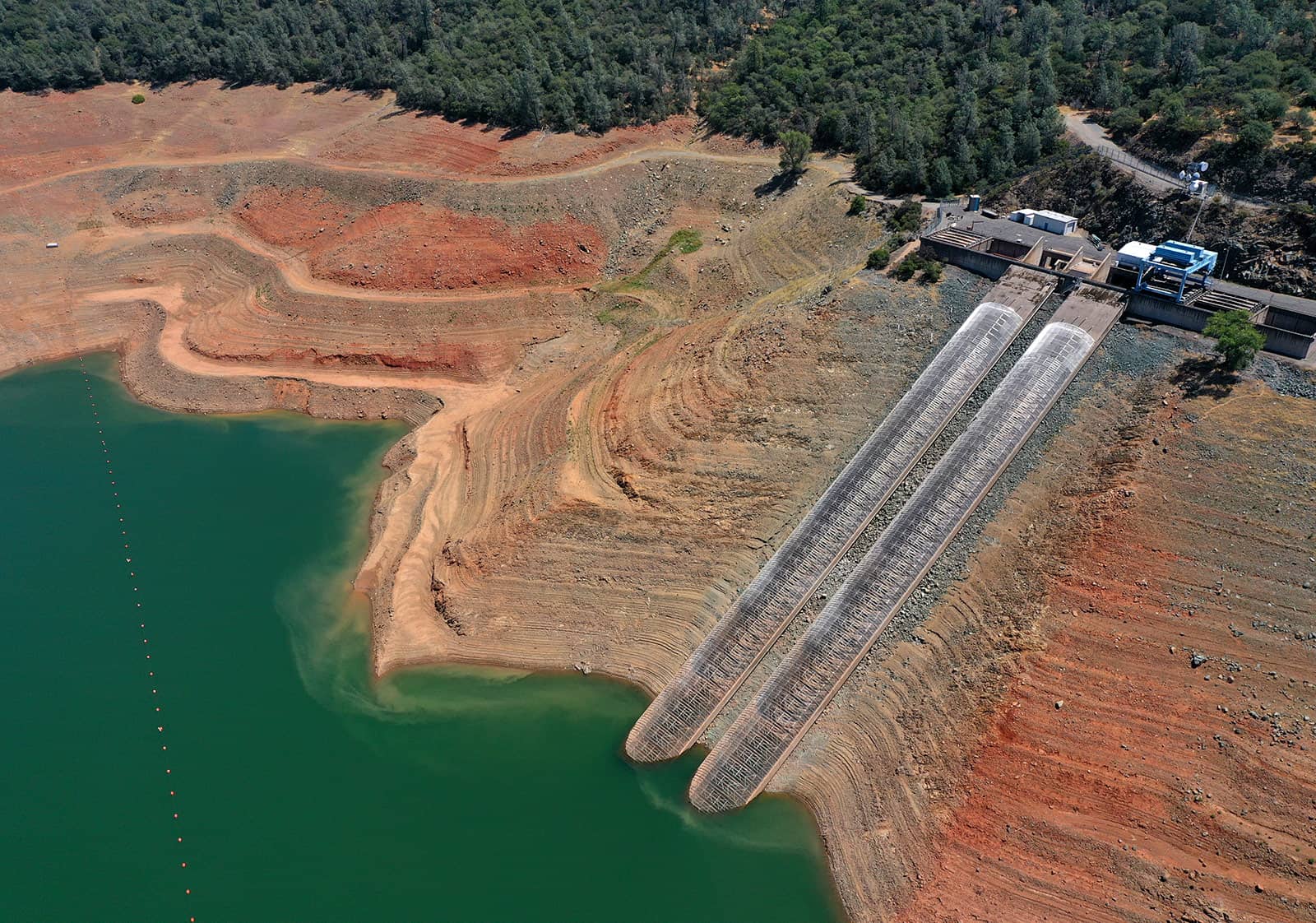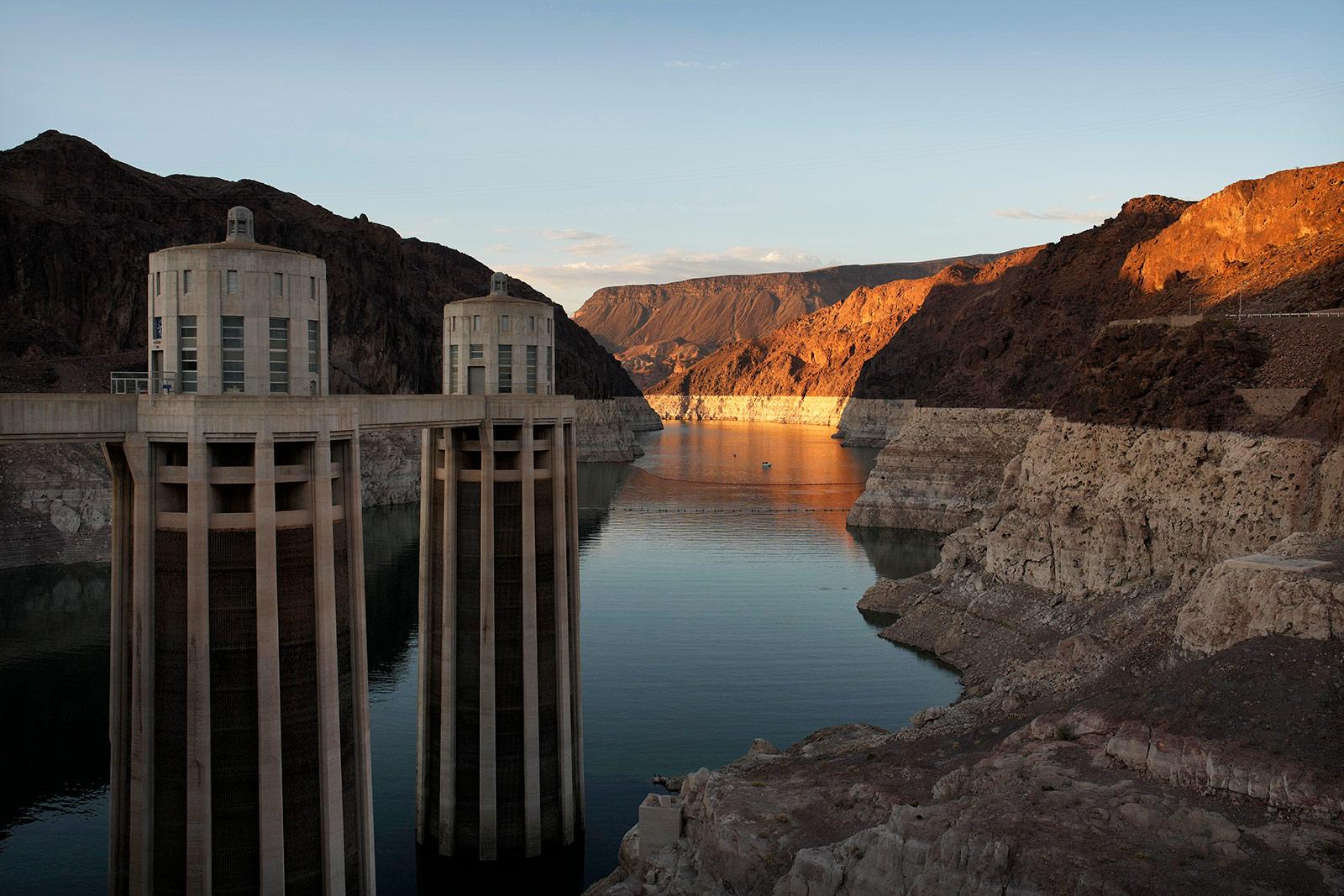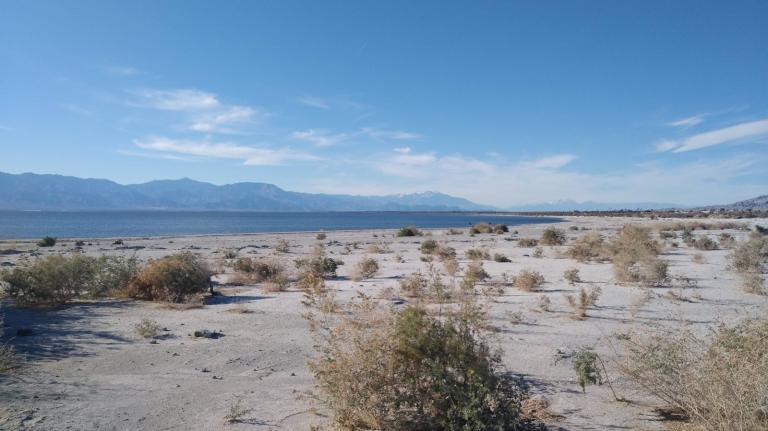This story is part of the Grist series Parched, an in-depth look at how climate change-fueled drought is reshaping communities, economies, and ecosystems.
Reports of low water levels at a few big hydropower plants in the West over the last few years have made it seem like hydropower is becoming less reliable. Last summer, officials in California were forced to shut down the Edward Hyatt Powerplant when water levels in Lake Oroville, the reservoir that feeds the plant, dropped below the intake pipes that send water into its turbines. In March, water levels dropped to historic lows in Lake Powell, the reservoir that supplies the Glen Canyon Dam in Arizona, bringing warnings of a potential plant shutdown in the near future.
These reports are alarming, because hydropower is a major source of carbon-free energy for the West — during a wet year, it can meet 30 percent of the region’s annual electricity demand in the West.
But a recent study by scientists at the Pacific Northwest National Laboratory challenges the idea that hydropower’s role as a backbone for the electric grid is fading. The authors looked back at the historical record to see how the western hydropower fleet has been affected by periods of drought over the 20th and 21st centuries. What they found shows that the reality is more complex, and that even during a serious drought, hydropower is more reliable than people might think.
“I think the misconception about hydro is driven by these marquee cases like Glen Canyon and the Hoover Dam on the Colorado River,” said Sean Turner, a hydrologist and water resources engineer and one of the authors of the study. “Those are really big and significant plants, but they’re a very, very small part of the overall Western hydropower fleet, which consists of hundreds of plants across the entire western region, contributing to an interconnected power grid. You need to study the whole system.”

The Edward Hyatt Power Plant intake facility at Lake Oroville (Justin Sullivan / Getty Images) and a photo of Sean Turner (Andrea Starr / Pacific Northwest National Laboratory)

I spoke with Turner about his findings, and about whether hydropower’s past performance is a good predictor of how reliable it will be in the future.
This interview has been condensed and lightly edited for clarity.
Q.What was the driving question behind your recent study on hydropower and drought?
A.The question was, what does drought actually mean for hydropower in the West? How does it affect different regions? We’re talking about 11 states, an enormous area, and diverse climates throughout the West. We’ve got the data to answer that question really rigorously.
Q.What did you find?
A.Even during the most severe droughts of the last 20 years, the Western hydropower fleet still maintained 80 percent of its average annual output — equal to the total output from all other renewables combined in the West. The reason you get this reliability is that despite the West’s notoriously volatile climate, there’s climate diversity. Drought in one region may be associated with wet conditions in another region, and so you’re unlikely to see the entire hydropower fleet affected by drought at the same time.
Q.Is the past a good predictor of the future in this case, because of climate change?
A.It depends. The reservoirs in the Southwest are totally unique. They store such huge volumes of water equal to multiple years of flow in the river. On balance, it looks like the impact of climate change in this area is going to be to slightly reduce the availability of water. And you have a system that’s already on a knife’s edge, where the amount of water allocated for cities, for agriculture, is already pretty much equal to the mean flow of the basin. So over a long period of time, if you don’t change how much water’s being taken out of the system, reservoirs are going to draw down. And you can kind of say that the past is no longer a reliable predictor of the future.
There are other systems, most other systems in the West, where your reservoirs fill up and draw down over much shorter periods of time. And that can be on the order of days in some of the major plants in the Columbia River Basin. In those cases, the past is a much more reliable predictor of the future. Even minor changes to the flow regime in the Columbia River are not going to greatly impact how much power can be generated from those plants.
Q.Even though the Southwest is a small part of the overall hydropower picture in the West, will states there need to compensate for that lost electricity in other ways, looking ahead?
A.At the moment, those dams are still producing power. If drought conditions continue and there are no extreme management actions to alleviate them, then those plants may have to shut down for a period of time until the reservoir levels recover. If that occurs, certainly other resources would need to be brought online. They’re part of an interconnected grid, so electricity can be imported from elsewhere. The impact is less likely to be power cuts and lights out, it’s more likely to be increased electricity costs and potentially increased carbon emissions, because there’s likely to be more reliance on gas and other resources.
Q.Is this something those states should be more proactively worried about in terms of achieving their clean energy goals?
A.It depends on how long the impact is. If drought conditions in the Southwest become a permanent feature, then those reservoir levels aren’t going to recover. And so you’ve got permanent loss of a significant source of carbon-free electricity. If that’s not replaced by some other carbon-free source, then there’s gonna be a long-term impact on the emissions of the electricity sector.
That’s a huge if. A lot of people are confidently making projections about the demise of Western water resources, particularly in the Southwest, due to the recent conditions, due to the threat of climate change. But hydrology is notoriously difficult to predict. It wouldn’t surprise me if in five years’ time, those reservoir levels were raised back up after a significant wet period. You just don’t know. And if that occurs, then you’ve got another lengthy period of time where you can continue to rely on those resources to produce carbon-free electricity.
Q.The study warns about a repeat of the drought that occurred in 1976 and 1977. What happened then?
A.This was a really severe historical drought. Most of the hydropower fleet was built by this period, and unlike more recent droughts, it affected most of the West. The two powerhouses of hydro generation in the West are the Northwest and California. California is really sensitive to two-year droughts. 1976 was a dry year in California. Then you had ’77 which was a really dry year throughout the West. We don’t have data for all plants that were operating during that time, but from the plants that we do have, that appears to be the year with the largest number of shutdowns.
Q.Is the idea that that’s sort of a worst-case scenario for the future?
A.It could be. The climate can produce things that you haven’t seen in 50 years. There’s potential for even worse cases. It may be 100 years before you see something like that again, or maybe it’ll be next year. But even in that case, the overall impact on hydro was still 25 percent or something below average total Western generation. So even in the most extreme drought, when we look back 100 years, there’s nothing that cripples hydro in a serious way. Hydro still supplies a lot of electricity during those periods.
Q.What are you looking at next?
A.Another study, which I think will be done relatively soon, will be on trying to understand more about the impacts of climate change on drought and whether or not that increases the risk of what we call Dead Pool events, so those cases where you get reservoir levels dropping below intakes. The historical record that we’ve got — 100 years — is a short period, and in hydrological terms, you don’t get a full view of variability of what the climate could possibly produce. What happens if you have some megadrought, multi-year, and it starts causing lots of plant shutdowns at the same time? How does that then affect the power grid?
Q.So does this recent study not actually tell us much about the future for hydro under climate change? What should people take away from it?
A.It’s not necessarily the case that the West is gonna be more and more dry. The hydropower powerhouse is the Northwest, and most general climate models predict wetter conditions in the Northwest. Even in the Southwest, there’s still a debate to be had about what’s likely to happen over the next 100 years as a result of climate change, because the system is extremely complex. Warming temperatures are likely to be associated with more precipitation. It’s really the balance between the impact on precipitation and the impact on evapotranspiration. So the climate change impacts remain very uncertain.
We are really focusing on a retrospective analysis of the impact of drought. It does reveal a lot about the present and future because the hydrological system will continue to produce droughts, many of those droughts will be similar in nature to the droughts that have been experienced in the past. And those general conclusions about the importance of climate diversity throughout the West, and the resiliency of the hydropower fleet — those are going to apply for future droughts as well. I can understand why people care so much about Glen Canyon and Hoover because those are such iconic systems. It’s not the whole story. That would be the main thing I want people to grasp.


